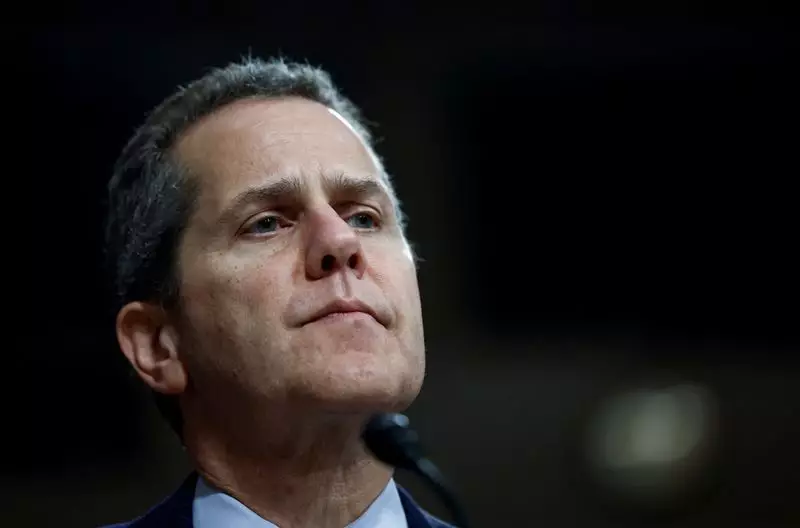The recent announcement of Michael Barr’s resignation from his role as the Vice Chair for Supervision at the Federal Reserve on February 28 sets off a chain of events that could significantly reshape regulatory policies in the American banking sector. As the regulatory landscape begins to shift with the incoming administration of President-elect Donald Trump, the implications of Barr’s exit warrant a detailed examination.
Michael Barr’s decision to step down early from a position with a tenure lasting until 2026 reveals the complex tensions inherent in regulatory roles during politically charged transitions. Barr, originally appointed by President Joe Biden, has advocated for stringent oversight measures aimed at reinforcing the stability of the nation’s biggest financial institutions. However, with Trump poised to take the reins of power on January 20, Barr likely recognized the increasing risks of a contentious legal battle that could distract from the Federal Reserve’s essential mission of ensuring monetary stability.
By resigning now, Barr sidesteps the potential for a politically motivated dismissal that could arise under the new administration. His statement hinted at the internal challenges that can accompany such a transition, particularly the risk of “distraction” that could impair the Fed’s regulatory responsibilities. His approach illustrates a strategic retreat, aiming to preserve the integrity of the institution while allowing Trump the opportunity to appoint a new, potentially less restrictive regulatory chief.
The implications of Barr’s resignation extend beyond individual leadership dynamics; they resonate deeply within the broader context of bank regulation during a period of shifting political ideologies. Trump’s administration has signaled intentions to adopt a more industry-friendly regulatory posture, fundamentally altering the regulatory landscape. With Barr out, the pathway is clearer for the appointment of officials who may favor deregulation, potentially leading to more lenient rules for large financial institutions.
In the immediate aftermath of Barr’s announcement, stock prices of major banks experienced a notable upswing, reflecting market optimism regarding the potential for policy changes favoring the banking sector. Such ripple effects underscore the interconnected nature of regulatory leadership decisions and market responses, demonstrating that personnel changes at the Federal Reserve can have immediate economic consequences.
While Trump now has the opportunity to appoint a new regulator, the dynamics of the Federal Reserve Board might prove somewhat limiting. Barr’s decision to remain as a governor takes away the prospects for a complete overhaul of the Board during the first part of Trump’s presidency. With the absence of open seats until 2026, any successor will likely need to come from within the current ranks, which may dilute the desired shift toward a more lenient regulatory framework.
Potential candidates such as Michelle Bowman and Christopher Waller emerge amid these transitions, both of whom possess distinct perspectives on regulatory measures. However, given that Democrats will maintain a majority on the Federal Reserve Board until 2026, this creates limitations on how swiftly or radically new deregulatory measures could be implemented. As pointed out by Jaret Seiberg from TD Cowen, significant reform in regulatory policies may be tempered by the current composition of the Board.
The ongoing saga surrounding Barr’s departure and the upcoming succession will undoubtedly carry long-term implications for banking regulations and the broader financial system. The push from the banking sector for reduced oversight has been met with considerable resistance from various regulatory figures, including Barr himself, who aimed to implement measures to bolster capital requirements and risk evaluations for significant financial institutions. With his resignation, pending regulations initiatives such as the “Basel III Endgame” may be significantly impacted—or possibly scrapped altogether.
The urgency of maintaining a stable and resilient banking system cannot be overstated, particularly in light of the lessons learned from past financial crises. Governing bodies must balance the push for growth within the financial sector against the critical need for frugality and sustainability. Implementing a less stringent regulatory framework may yield short-term benefits; however, the long-term potential for increased systemic risk looms significantly.
As the transition plays out, maintaining the independence of the Federal Reserve becomes crucial. It is imperative that the new administration respects the Fed’s mandate to set monetary policy without undue political influence. The core principle guiding the effectiveness of a central bank rests on its ability to operate free from political heat.
In this context, Barr’s resignation represents not just a personnel change but a pivotal moment for the integrity of banking regulations in the United States. The unfolding shifts will require vigilant monitoring to ensure that the balance between regulatory oversight and industry growth remains appropriately calibrated to safeguard both economic prosperity and stability in the long run.

